From CB radios to the Atari 2600, woodgrain trim was de rigueur styling accessory for much of the 20th century—and automobiles were no exception.
But unlike our favorite home electronics, there’s an obvious historical precedent for using wood trim on a car or truck. That’s because many vehicles once used wood as structural elements of the frame and body.
Heck, some still do (and we’ll get there in a sec).
So we decided to recall 10 of our favorite wood (or at least, wood-inspired) details found throughout the history of the automobile. Check out the list below and let us know what we missed.
***
10. 1991-96 Buick Roadmaster Estate Wagon
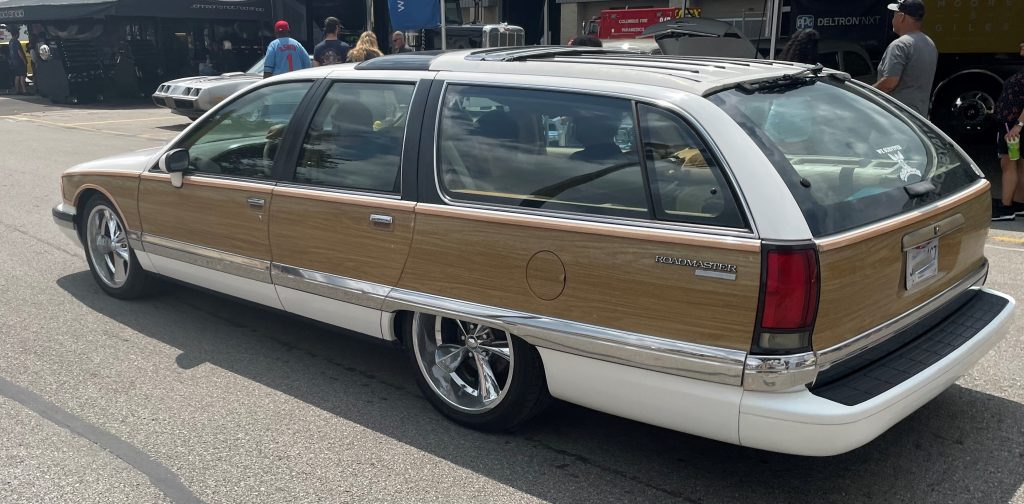
We’re including a Buick Roadmaster here for a few really good reasons.
For starters, the O.G. Roadmaster was the last “real” Woody Wagon, sold up through 1953—two years after Ford ceased its wood-bodied wagon in 1951.
Secondly, the Roadmaster Estate Wagon rocked the faux woodgrain trim well into the 1990s, and it looked far better than some of its contemporaries like the Town & Country minivan or even the PT Cruiser that would come a few years later.
Bust most importantly, these later wagons were exclusively offered with a smorgasbord of V8 powerplants, including the 5.7L LT1 in essentially the same tune found in the F-body Camaro/Firebird twins.
***
9. 1946-64 Willys Station Wagon
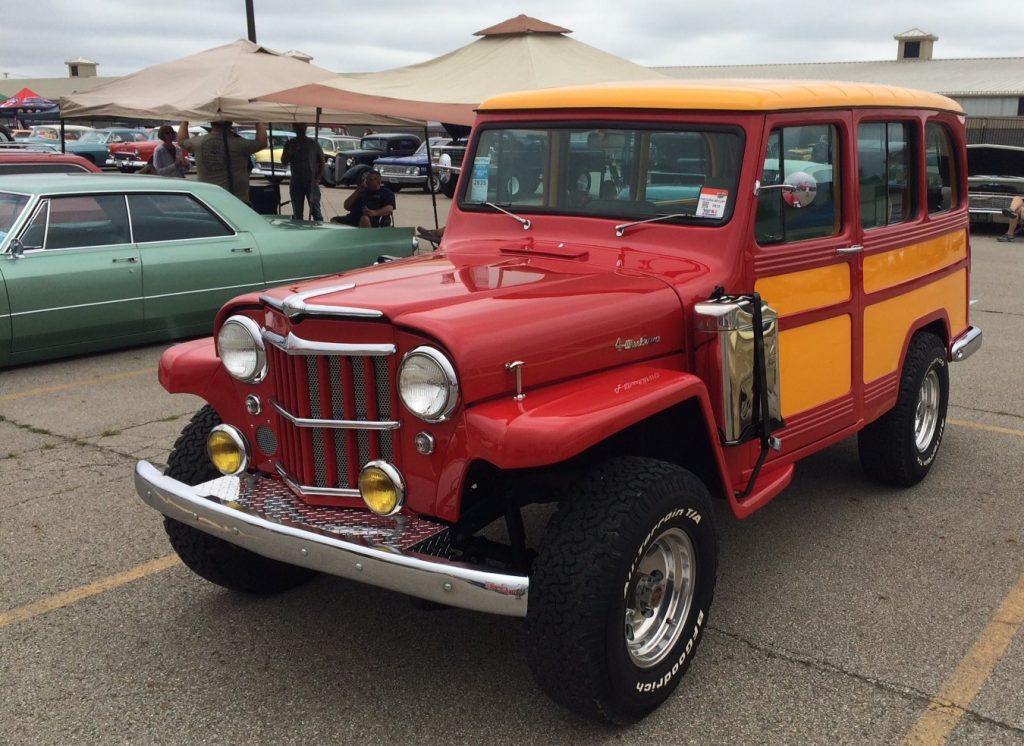
Gasp—We have an imposter in our midst!
Released immediately after the end of World War II, the Willys Station Wagon is not only regarded as the first “sports utility vehicle,” it was the first all-steel-bodied station wagon on the market.
So why does an all-metal car make the list here? Well, unlike other automakers who could afford to use faux wood accents to replicate the woody wagon look, the cash-strapped Willys company simply painted the wagon bodies using wood-hued colors on the metal panel inserts to mimic the vintage aesthetic.
And if we’re being honest, from 10 feet away, the illusion works.
***
8. 1982-1988 Chrysler LeBaron
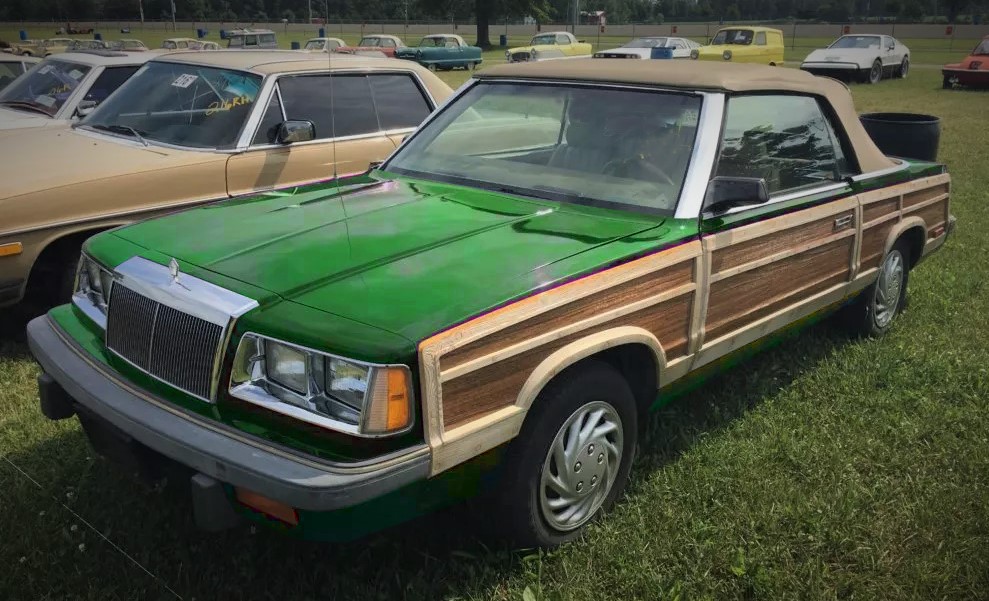
From Jon Voigt to John Candy, the humble Chrysler LeBaron has plenty of admirers.
Derived from Chrysler’s once-ubiquitous “K” platform that also underpinned its corporate cousins the Dodge Aries and Plymouth Reliant, the LeBaron is noteworthy as it was the first factory-produced domestic convertible made since the Cadillac Eldorado ragtop was dropped in 1976.
The LeBaron name itself was a nod to the famous coachbuilder and Chrysler first used it on Imperial Lebaron coupes and sedans way back in 1931—but ironically the oh-so-elegant faux woodgrain trim didn’t arrive until 1982 and it disappeared with its 1989 redesign.
***
7. 1928-31 Ford Model A Wagon
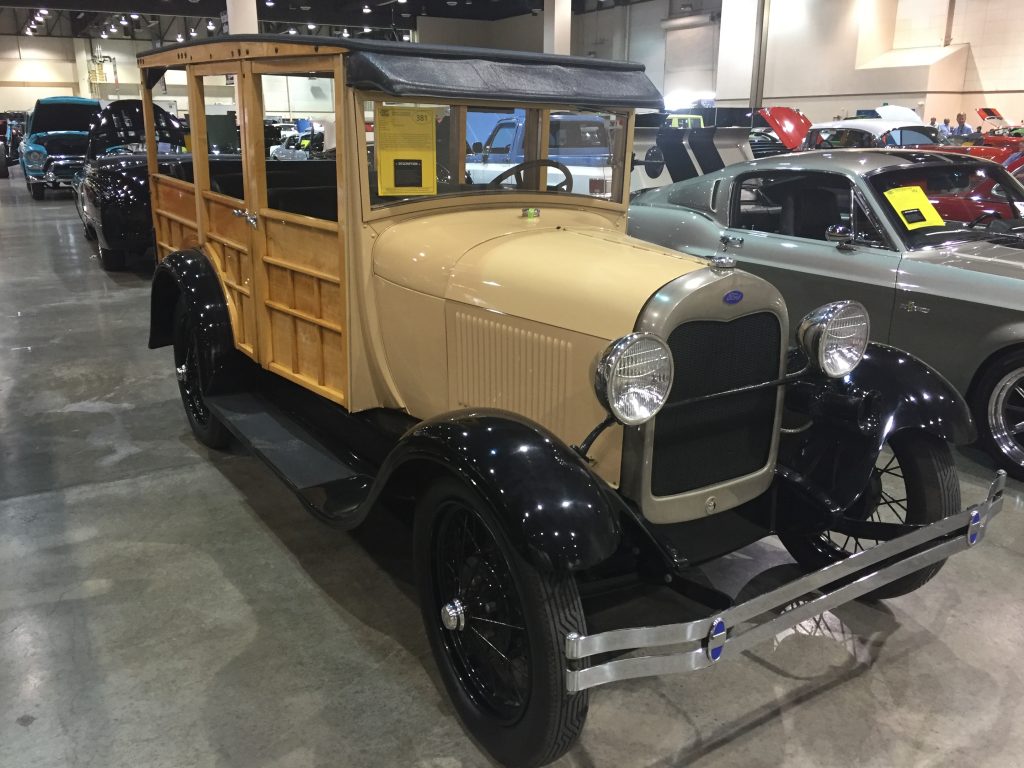
The Ford Model A is notable for a myriad of reasons, but did you know that the Model A wagon was the first official station wagon design produced by one of Detroit’s “Big Three” automakers?
Starting with a Model A chassis, Ford added the wood body that could be configured into the wagon you see here or a flat panel delivery truck. What’s even more interesting is that the wood used to build these vintage haulers was sourced from Michigan forests owned by the Ford Motor Company itself.
As you’d guess, the Model A wagon was replaced by the 1932 Model B wagon.
***
6. 1971-91 Jeep Grand Wagoneer
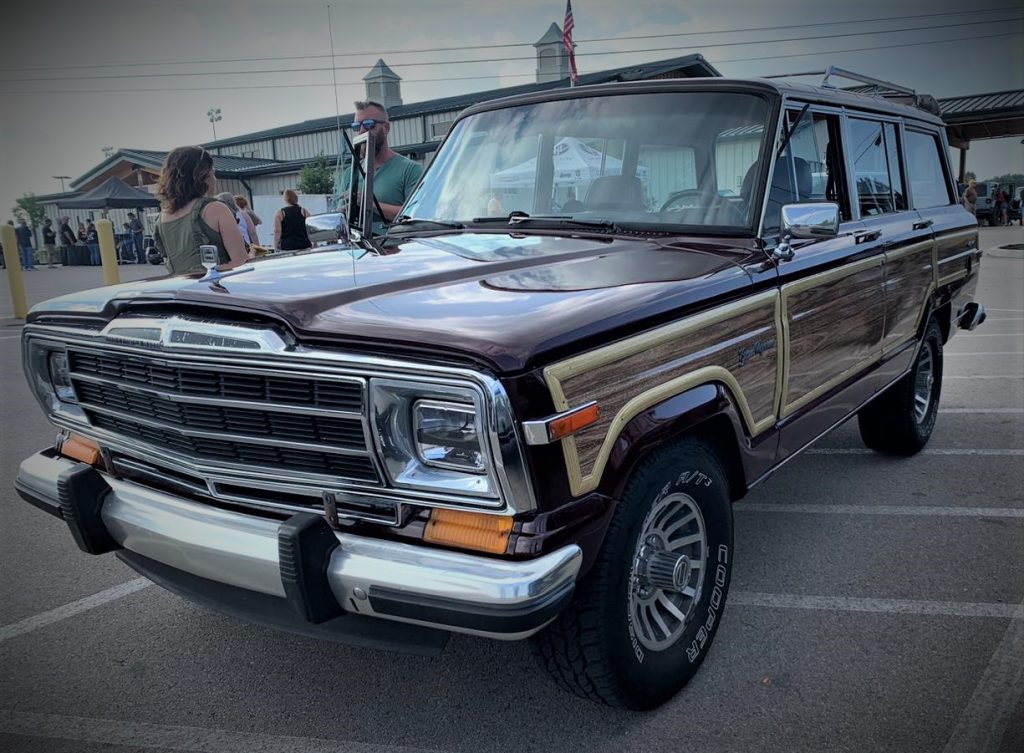
Technically speaking, Kaiser released the Wagoneer back in 1961, but it didn’t start getting the faux woodgrain treatment until about a decade later, when AMC took over.
Yet the wood siding would soon become inexorably linked with the FSJ Wagoneer, enough so that it’s tough to picture one of these SUVs without it. In fact, for most of its production run after that, the woodgrain came standard—though a more austere “custom” wood-delete package was available for a time in the 1980s.
How important were those wood accents to the Wagoneer legacy? Even the one-year-only 1993 Grand Wagoneer ZJ had a faux wood vinyl sticker package.
***
5. 1970-74 Plymouth Barracuda
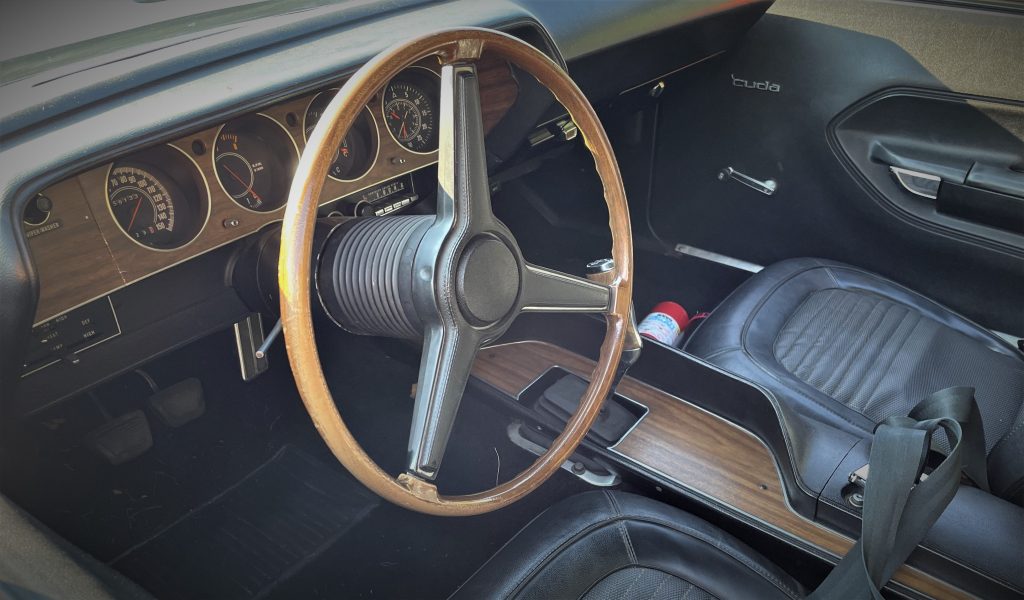
What’s the best way to complement the wooden handle on a Hurst pistol grip shifter? How about a woodgrain dash and console?
While the 3rd-gen. Barracuda already has plenty of things going for it, we’re particularly fond of the wood dash appliques that could be optioned from the factory. Depending on the year, the woodgrain was either straight cut or burled, and it was available up until the Barracuda’s demise in 1974.
Better yet, the woodgrain dash was available with the Rally cluster that could also be found in the Barracuda’s E-body doppelganger, the Dodge Challenger.
***
4. 1946-50 Chrysler Town & Country
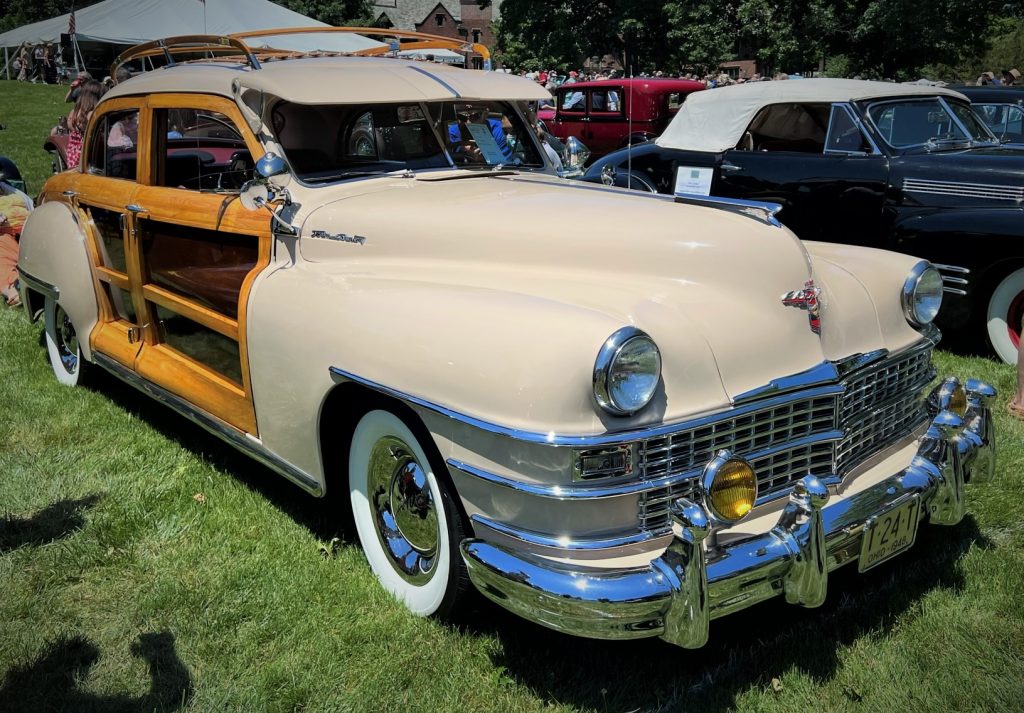
1949 marked the last time Chrysler used real wood in its iconic Town & Country line—a year later in 1950, the company switched to simulated wood panels. When the next generation of the Town & Country line launched in 1951, the wood (real or faux) was gone altogether.
What a lot of folks don’t realize about the Town & Country however, is that the nameplate encompassed a wide range of body configurations, which from 1946 to 1950, included a wagon, coupe, sedan, and convertible.
Fun Fact: The first modern windshield washer feature debuted on the 1950 Chrysler Town & Country.
***
3. 1981-86 Jeep CJ-8 Scrambler
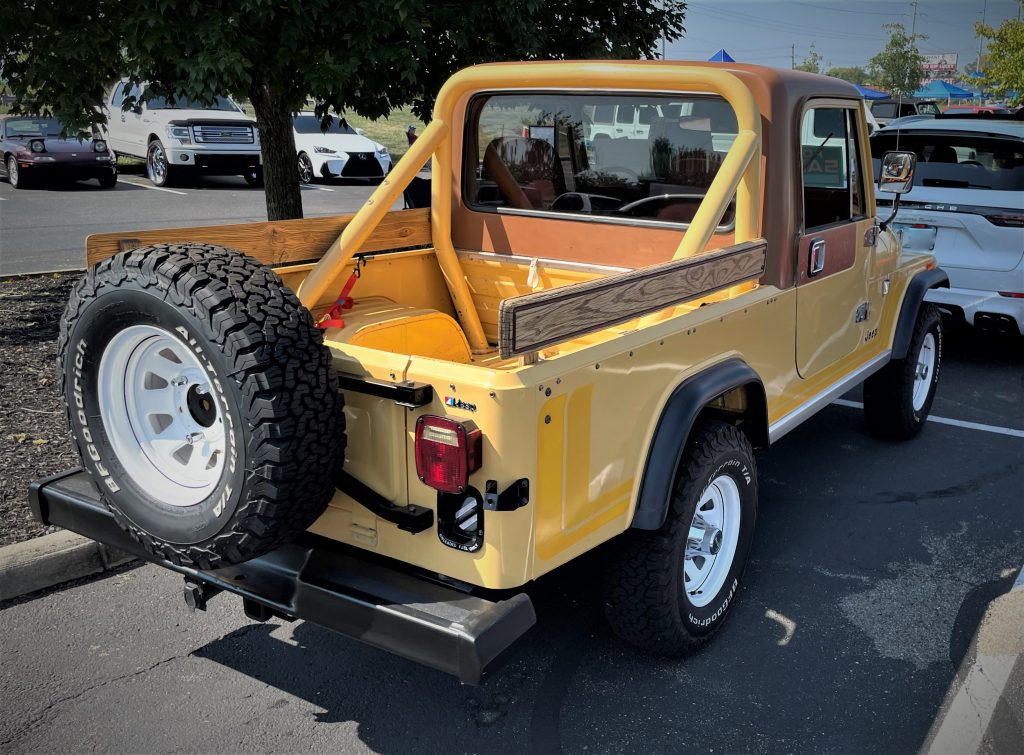
Correct us if we’re wrong here, but we believe that the CJ-8 Scrambler is the last domestic truck to come factory-equipped with a set of authentic wooden side rails—which is the perfect styling complement to a chassis that can trace its roots back to the early 1950s.
The Scrambler itself was based on the venerable CJ lineup born from World War II and was AMC’s attempt to capture the compact truck market that was growing rapidly with the arrivals of the Ford Ranger and Chevy S-Series.
Sadly, like many of AMC’s efforts, it came too little, too late to save American Motors. The company was soon bought by Chrysler and dissolved.
***
2. 1949-51 Ford Station Wagon
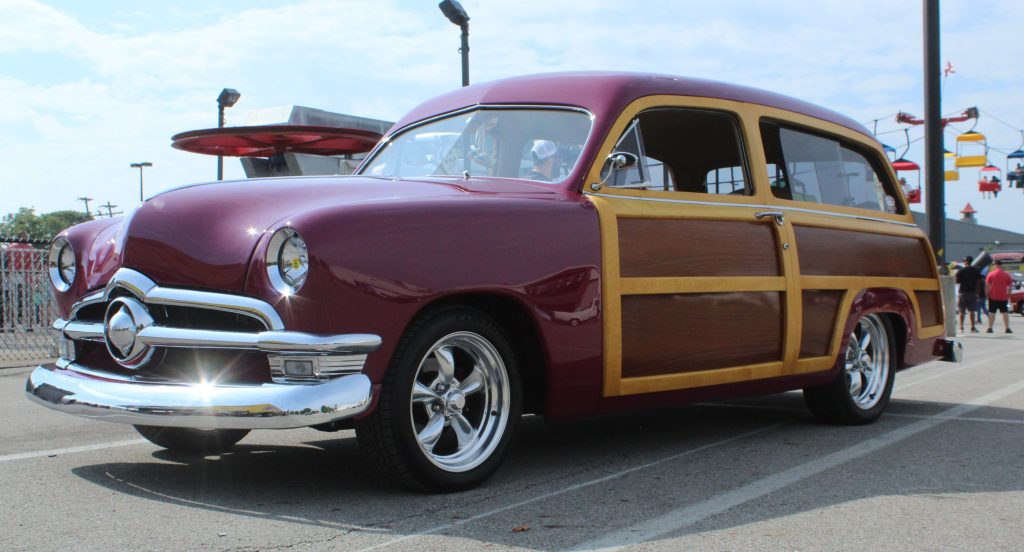
There are plenty of reasons to like the iconic “Shoebox” Ford, but for Woody wagon aficionados, it’s kind of bittersweet. That’s because the 1949 Ford Wagon marked the beginning of the end for the real wood body.
Yes, Ford still used real wood for the body construction, but it was now underpinned by a rigid metal frame. And in 1952, the wood was gone altogether, replaced by a full metal cabin with faux woodgrain trim.
In other words, 1951 marked the last true Ford Woody wagon model.
***
1. 1950-2020 Morgan +4
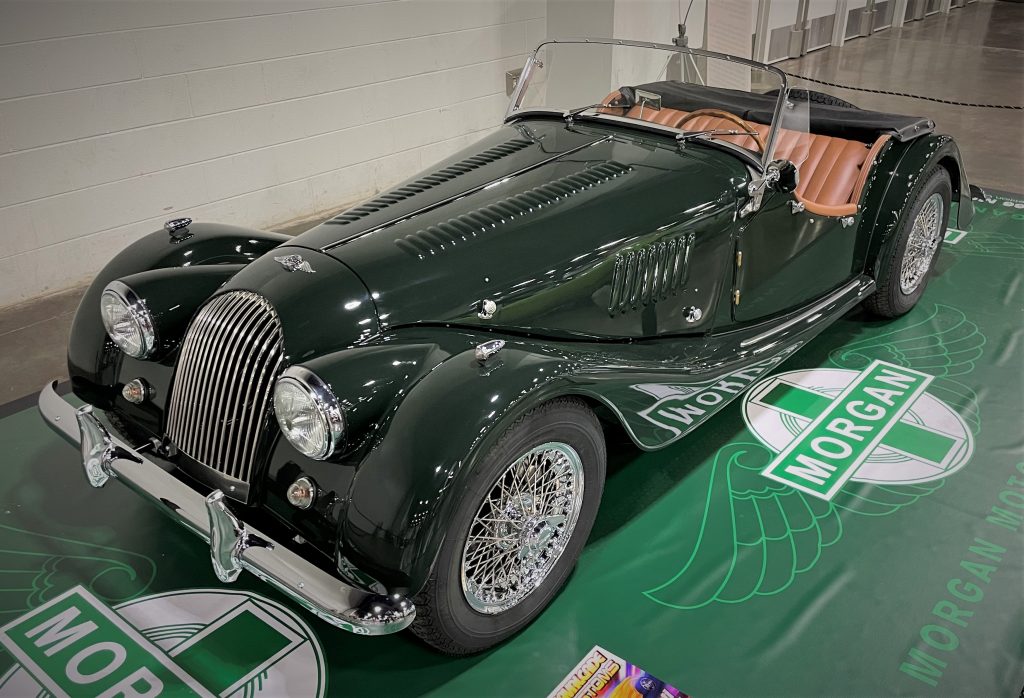
Yup, in the 21st century you can still buy a car that’s made with wood—modern Morgan +4 sports cars feature Ash in the body frame, as they’ve had since the 1940s.
But don’t let the word “frame” confuse you here. In this context, the frame is what supports and forms the body of the car, which is then wrapped in sheetmetal. The body is ultimately carried on a chassis that is made from metal (first steel, now aluminum).
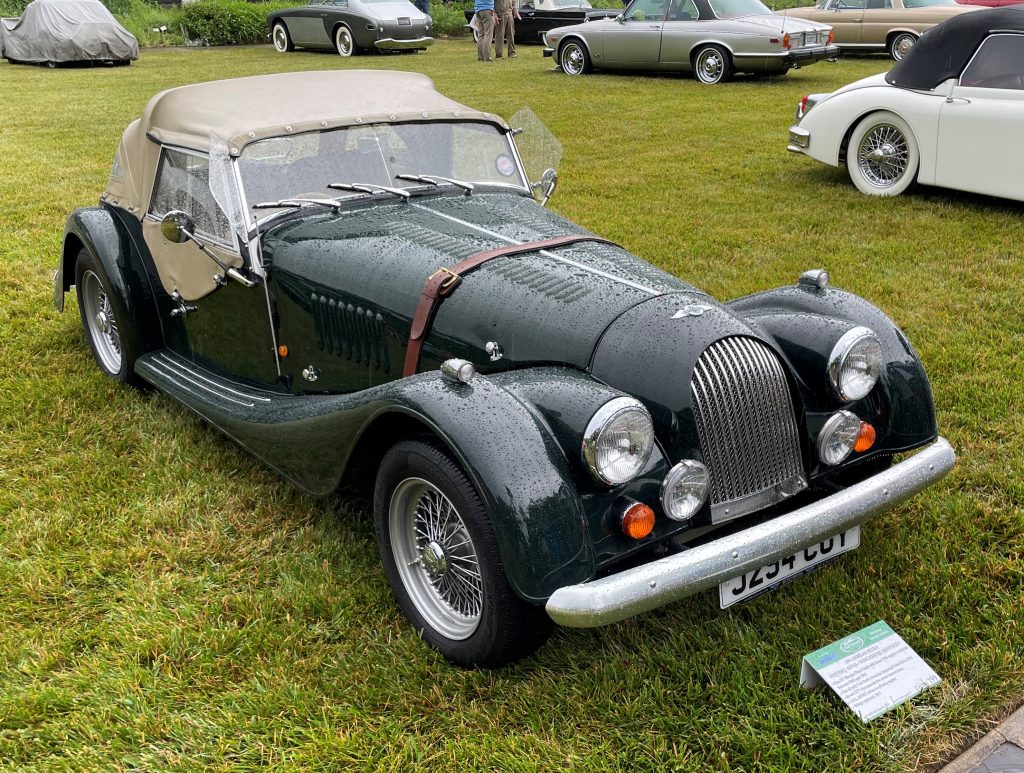
While the Morgan Motor Company stretches back to 1910, the Morgan +4 legacy began in the postwar era. The original design’s evolution spans three distinct production Series that ended in 2020. In 2021, Morgan unveiled an all new iteration of its elbow-dragging roadster known as the “Plus 4” that’s available to this very day.
And yes, it’s still made with wood framing components.
***
So, did we miss any notable wood features? Let us hear about it in the comments section below.

Comments